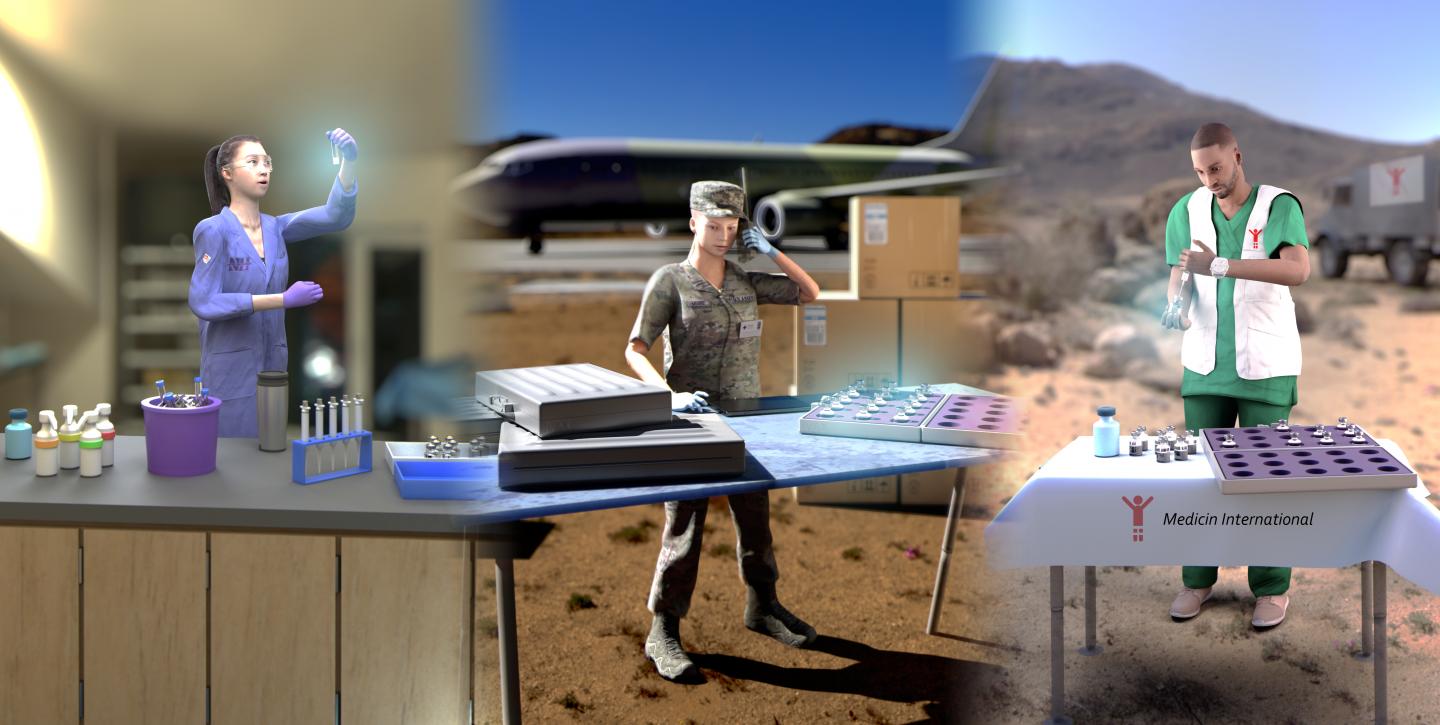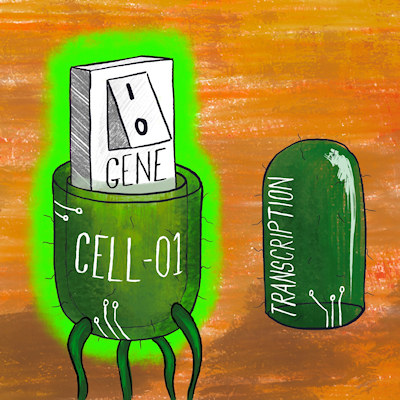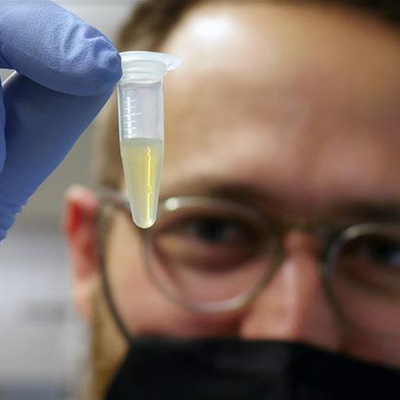April 22, 2021 -- A new cell-free synthetic biology technique that increases the volume of membrane components in the manufacture of conjugate vaccines can significantly improve the efficiency of vaccine production, according to a new method published in Nature Communications on April 22. The technology could enable on-site production of vaccines and therapies, enabling them to be more efficiently distributed in areas where they are most needed.
Cell-free gene expression (CFE) systems activate transcription and translation using crude cellular components instead of living, intact cells. These systems are used as platforms for biomanufacturing and synthetic biology, with applications for producing shelf-stable antibacterial medicines and vaccines.
CFE reactions based on the use of Escherichia coli can quickly synthesize grams of protein per liter in batch reactions, are scalable from the nanoliter to 100-L scale, and can be freeze-dried for months of shelf stability. The freeze-dried products can be activated by simply adding water, making them attractive platforms for portable therapeutic and vaccine production.
This technology was previously used to produce conjugate vaccines to protect against bacterial infections by a team of Northwestern University researchers, led by Michael Jewett, PhD, professor of chemical and biological engineering at Northwestern's McCormick School of Engineering and director of Northwestern's Center for Synthetic Biology. This work leveraged the E. coli-based CFE system to make one dose of vaccine an hour, costing around $5 per dose -- not an optimal cost for population-based vaccination programs.
"It was still too expensive, and the yields were not high enough," Jewett said in a statement.
Membrane-derived vesicles
The researchers therefore developed a new manufacturing platform -- called in vitro conjugate vaccine expression (iVAX) -- that uses cell-free synthetic biology, a process in which researchers remove a cell's outer wall (or membrane) and repurpose its internal machinery. The team developed a method that enhances membrane-dependent functions of cell-derived vesicles in CFE systems.

Membrane structures are present in all CFE systems, as vesicles formed by fragmentation and rearrangement of cell membranes during cell lysis and extract preparation. These membrane vesicles are responsible for important cellular functions such as activating cost-effective energy metabolism from oxidative phosphorylation in bacterial CFE systems. These membrane vesicles have been identified as components that enhance bacterial CFE systems but have mostly been underappreciated.
"For a variety of organisms, close to 30% of the genome is used to encode membrane proteins," said co-author Neha Kamat, PhD, assistant professor of biomedical engineering at McCormick. "Membrane proteins are a really important part of life. By learning how to use membrane proteins effectively, we can really advance cell-free systems."
In the current study, the researchers found that increasing vesicle concentration could be useful in making components for protein therapeutics such as conjugate vaccines, which work by attaching a sugar unit -- which is unique to a pathogen -- to a carrier protein.
The team started by characterizing the size distributions and concentrations of native membrane vesicles in bacterial extracts, specifically using light-scattering tools. They found that vesicles are varied in size and are relatively low in concentration compared with ribosomes and other small complexes. This low concentration explains how the inefficiency of previous CFE systems is derived from limitations of membrane protein synthesis, namely the fact that additional vesicle supplementation needed to match protein levels.
The team also investigated the effects of upstream extract processing steps on vesicle formation. They found that upstream extract processing (cell lysis) can be used to tune vesicle concentration. Specifically, they found that extracts centrifuged at a speed of 12,000 g (S12) produced a significantly higher concentration of vesicles compared to those centrifuged at 30,000 g.
Engineering cell-free systems that rely on enriched membrane-bound components
Next, the researchers used cell-derived membrane vesicles to enrich a variety of heterologous, membrane-bound proteins and substrates in extracts. They overexpressed six membrane-bound proteins to test if the vesicles could be enriched. Indeed, the cargo could be pre-enriched in bacterial extract by becoming embedded in the periplasmic (inner) membrane of E. coli cells and eventually becoming part of vesicles.
They also confirmed that PglB and PglO, key enzymes for glycosylation and for designing conjugate vaccines, were associated with membrane vesicles. With this, the team finally explored how cell-free glycoprotein synthesis (CFGpS) systems with increased membrane vesicles could improve yields.
The higher concentration of membrane-associated glycosylation components in S12 extracts improved glycoprotein yields and percent glycosylation of CFGpS systems. By using bacterial extracts with more vesicles, the team was able to shorten the time associated with extract preparation, increase glycosylation efficiencies, and enhance glycoprotein titers by up to about 170%.
Now, the Northwestern team can produce medicines that address antibiotic-resistant bacteria as well as new viruses at a rate of 40,000 doses per liter per day, costing about $1 per dose. The team used a 1,000-L reactor to generate 40 million doses per day, reaching 1 billion doses in less than a month.
"We set a goal to reach $1 per dose and reached that goal here. By increasing yields and lowering costs, we thought we might be able to facilitate greater access to lifesaving medicines," Jewett explained.
The researchers' work demonstrates the utility of the CFGpS system and iVAX platform in the on-demand bioproduction of conjugate vaccines. While the work was conducted using an E. coli-based system, the authors note that the methods can be extended to further optimize insect and Chinese hamster ovary (CHO)-based CFE systems that rely on endoplasmic reticulum-derived microsomes to perform glycosylation, embed nascent membrane proteins, and perform other membrane-dependent functions.
"Certainly, in the time of COVID-19, we have all realized how important it is to be able to make medicines when and where we need them," Jewett said. "This work will transform how vaccines are made, including for bio-readiness and pandemic response."
Do you have a unique perspective on your research related to vaccines or biomanufacturing? Contact the editor today to learn more.
Copyright © 2021 scienceboard.net








